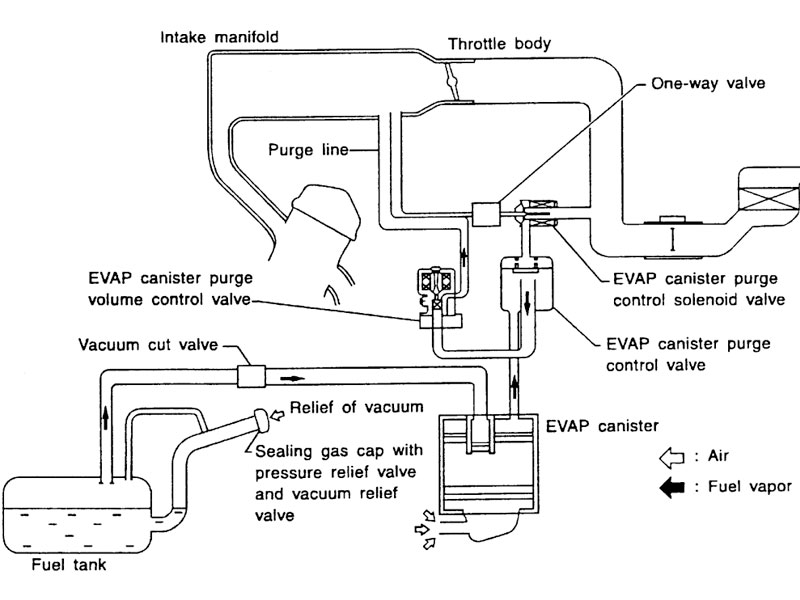Diesel engines are important power systems for on-road and off-road vehicles. Most heavy-duty trucks and buses are powered by a diesel engine due to the long record of reliability, high fuel-efficiency, and high torque output. Emission Control System Parts Diesel engines are easy to repair, inexpensive to operate, and extremely durable. It is not uncommon for a dieselengine to last 15-20 years and achieve a one million-mile life. From the standpoint of greenhouse gas emissions, diesel engines can compete with other advanced technologies,like hybrid electric vehicles, due to diesel’s inherent fuel economy relative to conventional spark-ignited, gasoline engines. Diesel-powered vehicles have demonstrated a 30-40 percent fuel economy advantage over their gasoline counterparts. This translates to about a 20 percent reduction in CO2 emissions.
While diesel engines have many advantages, they have the disadvantage of
emitting significant amounts of particulate matter (PM) and oxides of nitrogen (NOx)
into the atmosphere. Diesel engines also emit toxic air pollutants. Health experts have
concluded that pollutants emitted by diesel engines adversely affect human health and
contribute to acid rain, ground-level ozone, and reduced visibility. Studies have shown
that exposure to diesel exhaust causes lung damage and respiratory problems and there is
increasing evidence that diesel emissions may cause cancer in humans.
Companies that manufacture emission controls have responded to the challenge of
reducing air pollution from diesel engines. Through their efforts, cost-effective
technologies have been developed to reduce harmful emissions. In the mining, materials
handling and trucking industries, in urban bus fleets, ports, construction, and freight,
diesel emission control technologies have demonstrated their ability to significantly
reduce unwanted emissions at reasonable costs without jeopardizing vehicle performance.
Manufacturers of Emission Controls Association (MECA) member companies, together
with engine manufacturers, have worked together to meet the 2007 requirements
proposed by EPA on May 17, 2000 in the new highway heavy-duty diesel engine
(HDDE) “2007/2010 Rule.” These advanced heavy-duty powertrains were introduced in
January 2007, with further improvements expected in 2010. Clean diesel technologies are
also entering the North American light-duty vehicle fleet, with many vehicle
manufacturers targeting diesel passenger car and light-duty truck launches in the 2008-
2010 time frame. MECA member companies are also preparing for the next big
challenge of emission reductions from off-road engines to meet upcoming federal Tier IV
regulations.
Interest in diesel emissions control has grown considerably in recent years as
agencies such as the U.S. EPA and California’s Air Resources Board (ARB) put forth
new regulations and funding to clean up existing and new vehicles. MECA has received
many inquiries regarding the installation of emission controls on diesel engines.
Inquiries have included requests for technical information, information on past
experiences, the types of control technologies available, the suitability of a given
technology to a particular application, and the emission reductions that can be achieved.
This document has been prepared to supplement information already made available by MECA on outflow control innovations and gives an outline of the sorts of advancements being created for new diesel vehicles and trucks, including their working furthermore, execution attributes.
The descendents of mid two-way impetuses for fuel motors that were utilized to oxidize hydrocarbons and CO are oxidation impetuses. Diesel oxidation impetuses have been introduced on motors for above and beyond 20 years in great many retrofit applications and many millions of new vehicles around the world. Albeit initially created to lessen vaporous outflows like HC and CO, oxidation impetuses have shown 20-50 percent decreases in all out particulate matter on a mass premise.
Diesel particulate channels, including course through and divider stream plans, have
accomplished a critical encounter base, with in excess of 200,000 DPFs introduced as retrofits also, more than 4 million introduced as unique hardware on traveler vehicles in Europe. Wallflow channels are being introduced on all new substantial trucks in the U.S. beginning in 2007. While course through channels are fit for accomplishing PM decrease of around 30 to 75 percent, high proficiency divider stream plans can catch above and beyond 90% of the particulate. The two kinds of channels are equipped for catching the sub-micron, ultrafine particles equipped for entering profound into the lungs. As of late, the Association for Outflows Control by Catalysts (AECC) directed test programs for molecule size and number on light-obligation and rock solid vehicles utilizing the systems laid out in the European Particle Measurement Program (PMP). The consequences of the testing illustrated the productivity of divider stream channels to decrease motor out molecule number by three sets of greatness at a filtration proficiency of 99.9 percent.
Particular reactant decrease (SCR), utilizing urea as a lessening specialist, has likewise been introduced on diesel-controlled vehicles. Emission Control System Parts SCR is equipped for diminishing NOx outflows from 75 to 90 percent while at the same time diminishing HC emanations up to 80 percent and PM discharges by 20 to 30 percent. SCR frameworks are accessible on most Euro IV and V agreeable hard core trucks in Europe. SCR innovation has been chosen by a few
motor producers for meeting the forthcoming U.S. 2010 on-street guidelines. Various exhibit projects planned to market SCR frameworks for vehicles in the U.S. are in progress as of now. Any outflow control arrangement utilized by a motor producer for meeting by the same token the U.S. 2007 or 2010 hard core roadway guidelines or the U.S. Level 2 or California LEV II light-obligation vehicle emanation guidelines will be founded on a blend of advances examined in this paper. Besides, various other motor based systems, not shrouded exhaustively here, are likewise prone to be utilized to join fuel economy, emanations, and space imperatives into a frameworks way to deal with create a total discharge system for diesel-controlled vehicles.

